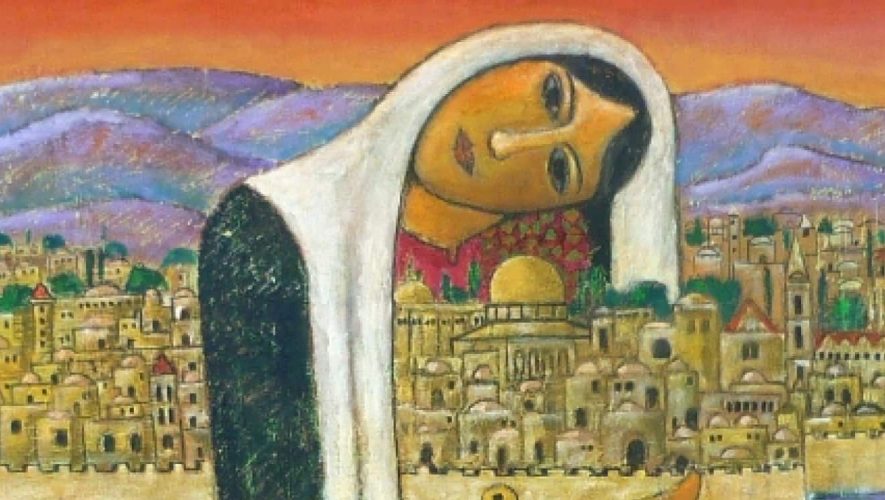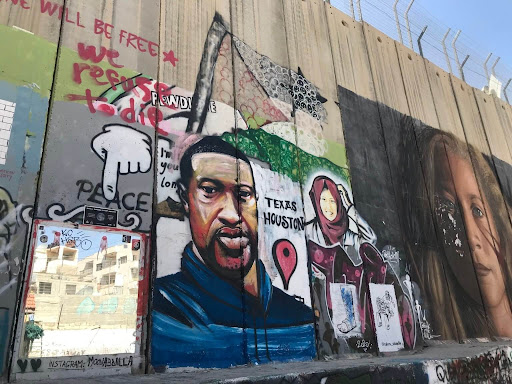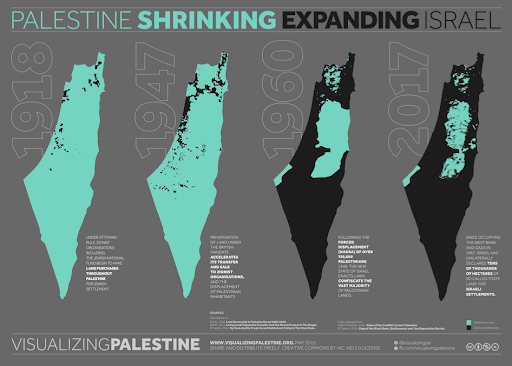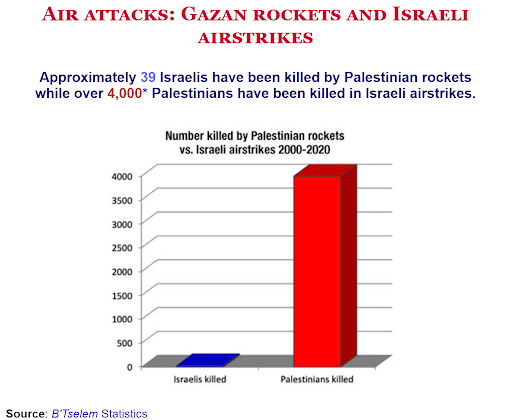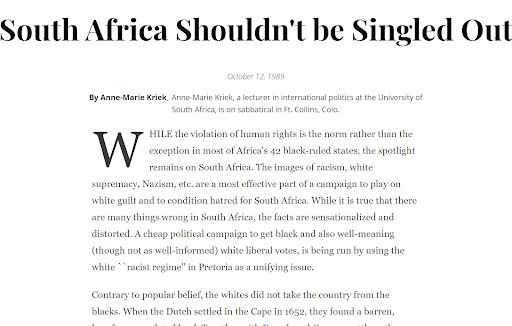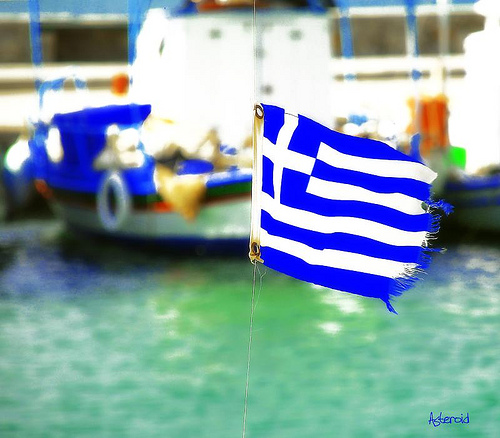Last May was not the first time that Israel laid siege to the Gaza Strip. In the fifteen years of the blockade, this was Israel’s fourth intensive bombardment campaign since 2008. After its failed incursion into Lebanon in 2006, periodically “mowing the grass” in Gaza maintains Israel’s strategic “deterrence capacity.” But for what seemed like the first time, the barbaric actions of the Israeli government received backlash from American politicians.
In the halls of Congress, representatives like Rashida Tlaib—the first Palestinian American congresswoman—and Ilhan Omar delivered powerful remarks on behalf of the Palestinian people, refusing to mince words about Israel’s crimes. For now, they remain little more than remarks; those who hold the true reigns of power, like President Joe Biden, were entirely uncritical of Israel’s conduct. But in a party where prostrating oneself before the Israel lobby is the norm, the shift was still noticeable.
The Palestinian cause received more attention on social media than ever before. Though the mainstream media worked furiously writing and rewriting headlines in favor of Israel, and Palestinians faced blatant censorship from companies like Facebook, this was not enough to stop the barrage of videos showcasing the devastation from garnering sympathy for Palestinians.
Many pundits have rightfully attributed the shift in generational perception of the Palestinian cause to the Black Lives Matter (BLM) movement. Solidarity between Black Americans and Palestinians arose during the first wave of the BLM marches in 2014; Palestinians took to social media to share tips with Ferguson protestors on dealing with tear gas. Last summer’s George Floyd uprisings saw Americans confronted head on with the total might of the police state. Images of protestors and civilians savagely beaten with batons, sprayed with tear gas, shot by rubber bullets, and kidnapped by covert special forces reinforced the clear dichotomy of the struggle.
For many young Americans, it was not hard to make the connection when seeing footage of Israeli police storming the Al-Aqsa mosque and brutalizing worshippers, and hearing about Palestinian children shot dead while simply protesting. After a summer of hearing conservative politicians like Senator Tom Cotton and President Donald Trump call for martial law and refer to Black Americans as thugs and terrorists, it became more obvious that similar tactics dehumanize Palestinians.
George Floyd Mural on the annexation wall in Bethlehem
However, this is not to say that the Zionist propaganda machine has disappeared. The liberal use of the charge “antisemitism” continues to hold success, fitting in well with an online culture of spurious accusations of bigotry and a desire to seem morally righteous. Along with this, another Zionist talking point reared its head: “it’s all just so complicated.” In an era where social media encourages uncharitable takes and simplistic narratives, this phrase is effective. But it is also incredibly misleading.
When Zionists play the “it’s all so complex” or “educate yourself” card, it is not an actual call for one to do research. Rather, it gaslights young Americans into believing that their eyes deceive them, that there’s some deeper, historical context that justifies the oppression of the Palestinians. And there is not. It is the historical context that is itself the best evidence of the righteousness of the Palestinian cause.
What is the Nakba?
To Israelis, 1948 is the year of their independence, the establishment of a Jewish state, the culmination of the dream of Zionism after centuries of persecution. In fact, it is illegal in Israel to suggest the year is anything but that. But for Palestinians, 1948 signifies the Nakba: the catastrophe. It is the event where Zionist paramilitaries forcibly drove over 750,000 Palestinians from their homes in a deliberate act of ethnic cleansing. For decades, Palestinians have written about the sheer scale of the horror; yet there is a long history of denial and untruth surrounding the tragedy.
Israel originated from Zionism, a colonial movement advocating for the establishment of a Jewish ethnostate. In 1917, the British government—with the backing of Zionist leaders—issued the Balfour Declaration, which asserted its support for a Jewish state in the region of Palestine. Zionist thinkers envisioned a return to the homeland, and the Palestinians living in the area stood in the way of that dream. Their solution, articulated in 1937 by Zionist leader and later Prime Minister David Ben-Gurion, was simple: “we must expel the Arabs and take their places.”
In 1947, the fledgling UN passed Resolution 181, which recommended partitioning the British Mandate of Palestine. Despite owning only seven percent of its land and being a third of its population, Jews would receive 55 percent of Mandatory Palestine for Israel. But under this plan, Arabs would have consisted of as much as 47 percent of the population, a percentage Ben-Gurion deemed unacceptable. Zionist leaders accepted the international legitimacy provided by the resolution whilst simultaneously preparing to violate it through a premeditated ethnic cleansing campaign.
Though Israel frames itself in this conflict as David facing the Arab Goliath, this could not be further from the truth; better trained, better armed Zionist armies outnumbered the Arab forces. Ben-Gurion was well aware that the disarrayed Arabs posed no legitimate threat to the Jewish state, despite his fiery public rhetoric about a second Holocaust, and sought to maximize Jewish land grabs. He predicted in 1937 that “after the formation of a large army in the wake of the establishment of the state, we will abolish partition and expand to the whole of Palestine.” Zionist paramilitaries expelled a quarter of a million Palestinians before Israel declared its independence in May 1948, before a single Arab nation had declared war.
The suffering of these Palestinians is also unstated in the popular narrative around Israel’s founding. Families were separated, marched at gunpoint to borders and ports, often with nothing but the clothes on their backs. Those who had enough time managed to salvage the keys to their homes, which have become a symbol of the Palestinian hope to return. Yet, for many, even this dream will never be fully realized, as Zionist militias blew up most homes with dynamite and laced them with mines to prevent return. Israel built many towns and cities on top of the ruins of over five hundred Palestinian villages. Massacres accompanied the large-scale plunder to hasten the expulsion of Palestinians. Such massacres have produced chilling witness testimony, with survivors such as Othman Akel recalling:
“I saw the Zionist terrorist soldiers ordering the bakery man of the village to throw his son in the oven and burn him alive. The son is holding the clothes of his father tightly and crying from fear and pleading to his father not to do it. The father refuses and the soldiers hit him in his gut so hard it caused him to fall on the floor. Other soldiers held his son, Abdel Rauf, and threw him in the oven and told his father to toast him well-done meat. Other soldiers took the baker himself, Hussain al-Shareef, and threw him, too, in the oven, telling him, ‘Follow your son, he needs you there.’”
By the end of the war, Israel had expanded to approximately 78 percent of Mandatory Palestine and expelled nearly half of the Palestinians from their homes. Over the next few years, massive land theft, facilitated by the new Israeli government, increased Israeli ownership of former Palestinian land from 7 percent in 1947 to 95 percent after 1950. Palestinian refugees relocated to the Gaza Strip, the West Bank, and surrounding countries like Jordan and Lebanon. Despite numerous UN resolutions affirming Palestinians’ right to do so, Israel has not allowed their return. As a result of the Nakba and the 1967 War, there are over 5.7 million Palestinian refugees today, of which 1.5 million reside in UN Reliefs and Works Agency refugee camps.
“Fifty Years of Dispossession”
After the Nakba, Israel had successfully stolen much of the land it coveted, yet some remained. The Abrahamic holy city of Jerusalem remained divided, with Israel controlling West Jerusalem and Jordan holding East Jerusalem. The Gaza Strip and the West Bank also remained outside Israel’s control. This status changed in 1967 after Israel’s triumph in the Six-Day War.
After the war, Israel began occupying the east side of Jerusalem, the Golan Heights in Syria, the Gaza Strip, and the West Bank. Israel maintains that it rightfully conquered this land in a defensive war, but this is a total fabrication. Israel openly courted war, stunning even US negotiators by launching a preemptive attack on Egypt days before scheduled de-escalation talks. As then Israeli Minister of Housing Mordechai Bentov said, “this whole story about the threat of extermination was totally contrived, and then elaborated upon, a posteriori, to justify the annexation of new Arab territories.”
Recently declassified documents reveal that, as many suspected for years, Israel had planned the land grabs long in advance. Israel displaced nearly 400,000 more people from the West Bank, half of whom were already refugees from the 1948 war. The military occupation instituted after the war remains to this day, with millions of Palestinians living their lives under the brutal threat of violence from the Israeli state.
In the occupied West Bank, Palestinians are subject to military law. They must obtain special permits to travel and must deal with the humiliation of going through military checkpoints. Almost six hundred checkpoints and roadblocks litter the West Bank, severely restricting Palestinian freedom of movement. Palestinians must travel on separate, crudely constructed roads, while illegal settlers breeze by on highways. When arrested, they can be subject to “administrative detention,” which holds them indefinitely without charges and routinely subjects them to torture. Charged Palestinians find themselves in courts with a nearly 100 percent conviction rate.
While the Palestinian Authority (PA) has some degree of jurisdiction in parts of the West Bank, the occupation permeates the entire territory. The Oslo Agreement originally established the PA as a temporary body. Now, it functions not as a real Palestinian government but as an administrative body that largely serves as a subcontractor for the Israeli occupation. In areas where the PA has control, it collaborates with Israel, protecting settlers and quashing Palestinian dissidents.
Elected in 2005, PA President Mahmoud Abbas has never faced reelection. The Palestinians scheduled legislative elections last May, but late in April, Abbas canceled them after pollsters predicted his party, Fatah, would perform poorly. Abbas laid the blame at Israel’s feet, but Palestinians widely understood that Israel and the Biden administration supported the decision.
The US postures in support for democracy and the people’s free will, but consistently decides that the Palestinians do not have this right. After Hamas won the Palestinian legislative elections over rival Fatah in 2006, the Bush administration, Israel, Fatah, and Abbas attempted to overthrow Hamas. Hamas got wind of the plot and expelled Fatah from the strip in the 2007 Civil War. A Hamas administration was seen as unacceptable because it did not renounce armed struggle or support a two-state solution, ostensibly a condition the US holds as non-negotiable for all parties involved.
However, the US has not applied the same standard to Israel. Benjamin Netanyahu’s Likud Party ran the government for twelve consecutive years while also openly opposing a two-state solution. In fact, Israeli governments have held hardline positions against Palestinian statehood for decades since its founding, including that of former Prime Minister Yitzhak Rabin even years into the Oslo process.
In terms of power, the Israeli government has a much greater capacity to undermine a potential two-state or one-state solution than Hamas, so its actions should have been far more concerning. In 2018, the Knesset, the legislative body of Israel, passed the nation-state law, which declared that national self-determination in Israel is a right unique to the Jewish people. Not only did this law openly embrace downgrading its Palestinian citizens to second class, it openly admitted that the premise of the Oslo process and the “peace proceedings”—that both Palestinians and Israelis deserved self-determination—was always a lie. Yet, as usual, Washington did nothing about this, as that same year, the Trump administration closed the Palestinian Liberation Organization’s offices in DC. The nation state law was not unique: the Adalah Justice Project database lists 65 Israeli laws that either directly or indirectly discriminate against Palestinians.
Naftali Bennett, Israel’s new prime minister, once proclaimed that “I have killed a lot of Arabs in my life and there is no problem with that,” and declared in 2014 that he would never allow a Palestinian state to exist. He even opposed Trump, Former Senior Advisor to the US President Jared Kushner, and Netanyahu’s ludicrously one-sided “peace” agreement, saying it did not go far enough to favor Israel. Radicalism, it seems, is wholly inexplicable from the seventy-three years dispossessed Palestinians, but entirely acceptable to the Americans when coming from Israel.
The US holds the Israelis to a far lower standard in “peace proceedings” than the Palestinians, choosing to focus on how Palestinian rhetoric is too extreme, rather than looking to how the Israelis, who hold the real power, take steps to undermine a solution through settlements. Since 1967, Israel has settled nearly 620,000 Israelis in the occupied West Bank and East Jerusalem, a blatant violation of the Geneva Convention, which holds that “the Occupying Power shall not deport or transfer parts of its own civilian population into the territory it occupies.”
Of course, defenders of Israel deny the occupation occurs, claiming that the land is rightfully theirs “by conquest.” But there lies the catch-22 of Israeli policy: if the land does not belong to them, then Israel has been illegally occupying these territories for half a century. If it does, Israel is still guilty of ignoring its obligations and depriving two million Gazans and three million Palestinians in the West Bank of their basic civil rights. The Zionist project depends on maintaining this cognitive dissonance, for they covet Palestine’s land, not her people.
The far-right settlers see their colonial project as a national one. The basic premises of their core beliefs—centered around the idea that the whole of Palestine belongs to them—are shared by the Israeli government and its citizens. Settlers routinely inflict violence on native Palestinians, and do so knowing full well they’ll receive indifference at best from the authorities and active participation at worst. When describing the violence occurring in Israeli cities like Lod last month, commentators who’ve chosen to describe it simply as equal “clashes” between Israelis and Palestinians miss this dynamic. While Palestinians have committed violence, the full might of the state backs Israeli settler and civilian violence. Despite the Israelis having committed most of the attacks, some estimate Palestinians accounted for 90 percent of the arrests. Israel subjected Palestinians to massive arrest campaigns that targeted many critics of Israeli oppression, such as well-known activists Muna and Mohammed-El Kurd.
In the “mixed” city of Lod, the state of emergency and curfew last May did not apply to the hundreds of armed settlers, who flooded the city to serve as “battalions” to reinforce police authority and “maintain order.” A similar situation exists in the neighborhood of Sheikh Jarrah, the catalyst for the current conflict, as Israelis have blockaded the neighborhood to the families facing expulsion but allowed settlers to roam wherever they please.
As Americans, we may recall the unnerving links that last summer’s unrest revealed between right-wing militias and the police, who worked to target BLM protestors. In Israel, a similar dynamic is at play; settlers understand that the police and occupation forces are present solely for their benefit, and exploit the fact that they can attack Palestinians in full view of the authorities or even with their help. The Israeli police play a crucial role in enabling far-right Israeli mobs to hold massive marches through occupied East Jerusalem, shuttering Palestinian businesses, limiting their movement, and clearing a path for the settlers. The right to demonstrate and protest for Palestinians is highly restricted no matter where they live, in the occupied West Bank or inside Israel proper.
The Gaza Strip
In Gaza, the occupation takes a different form. Despite no longer maintaining boots-on-the-ground presence on the strip, Israel has since imposed a devastating and deadly blockade. Even before the blockade, Gaza was experiencing the economic effects of “de-development,” which describes intentional economic crippling through limiting access to critical inputs required for growth.
Besieged on all sides, two million people subsist in only approximately 140 square miles, one of the Earth’s most densely populated places. Israel maintains a strict no-go zone on the east, while Egypt maintains the blockade on the Rafah border crossing, the only other exit point on the strip.
Israeli gunboats patrol the waters around the Mediterranean sea, sealing off Gaza’s coast and severely limiting the waters in which Palestinians can fish. In 2010, IDF naval commandos killed nine Turkish activists aboard the Marvi Marmara, a ship in a flotilla attempting to bring humanitarian aid to Gazans in dire straits. Israel also controls the airspace over Gaza, which they regularly use to launch devastating bombing campaigns. Palestinians have no airforce or standing military, and cannot leave or enter the strip by plane. When the Yasser Arafat Airport, the first airport in Gaza, was opened in 1998, it operated for only two years before Israeli air raids and bulldozers destroyed it.
Everything that enters and exits the Strip does so at Israel’s behest. The conditions in Gaza have gotten so bad that the UN has deemed it “unlivable,” with the strip characterized as the world’s largest open-air concentration camp. Youth unemployment is over 50 percent, while 98 percent of Gaza’s drinking water is contaminated, poisoning over a million children. Indeed, the burden of the Gaza blockade often falls heaviest on children; they make up almost half the population there. The children of the strip have lived their entire lives under siege, living through the terrifying horror of numerous Israeli aggressions in Gaza. The mental health of Gazan civilians is truly devastating, with nearly 40 percent of youth having considered suicide, something not addressed in reporting about casualties and physical injuries. For Gazans, PTSD does not exist because the trauma is “repetitive, ongoing and continuous.”
The collective punishment Israel levies upon the Palestinians is an egregious violation of international law, an abdication of an occupying power’s responsibility towards those it occupies. Israel cannot claim that its actions amount to a normal embargo of a “terrorist state” when Gaza is not a foreign entity; it is a subjugated population of Israel.
Israel routinely blocks key medical equipment from entering the strip, as well as construction supplies needed to rebuild every time Israeli officials decide to “mow the grass.” Electricity is only accessible for a couple of hours every day. The situation is so dire that when Israel rains death from the sky, Palestinians, with no bomb shelters or missile defense system, cannot even become refugees again; they are trapped. More recently, Israel again abdicated its responsibility as an occupying power by leaving Gaza to fend for itself in the COVID-19 epidemic.
In April last year, then-defense minister Naftali Bennett suspended COVID-19 testing in Gaza. The recent bombing of the strip damaged the only testing laboratory. Gaza still suffers greatly from COVID-19, while Israelis party in the streets of Tel Aviv and relish the benefits of the vaccine they’ve withheld from Palestinians deliberately. Israel blocked shipments of the vaccine to the strip earlier this year before eventually relenting under international pressure.
While most Israelis are fully vaccinated, less than five percent of Palestinians in Gaza can say the same. Since the ceasefire took effect in late May, Israel has denied 90 percent of Gaza patients’ requests for urgent medical treatment that cannot be received in the strip, leaving cancer patients and the seriously ill to languish. When we talk about Israel-Palestine, it is often in the framework of “cyclical violence,” which occurs periodically and then lulls. But the truth is that the violence is endless and always one-sided.
The Current Crisis
The current flare-up started in the neighborhood of Sheikh Jarrah, an enclave in occupied East Jerusalem. Sheikh Jarrah was one of the few neighborhoods that repelled an attempted Zionist takeover in the Nakba, with British troops, locals, and Arab armies protecting the coveted Old City. In the process, Jewish residents were evacuated and resettled in West Jerusalem. Their property fell under Jordanian administration, which mostly held it in virtual trust, except for a few plots of land in Sheikh Jarrah, where it built residencies for expelled Palestinians in West Jerusalem. On the flip side, Israel mostly demolished or expropriated land and property that fell into their possession.
For the past few decades, the neighborhood has been under constant assault by settler organizations seeking to “Judaize” East Jerusalem. Israel uses a variety of different methods to push Palestinians out of their homes and claim their land. Israel’s strict absentee laws allow them to arbitrarily claim property from Palestinians who have not established a “center of living” in East Jerusalem. Stay away too long on vacation, at university, or a new job, and you may find your home taken. The Israeli government routinely demolishes Palestinian homes for “security” or “historical” purposes, or building without rarely granted permits. Often, Israel forces Palestinians to pay for the demolition of their own homes, adding to the constant trauma of occupation and dispossession.
After Israel occupied East Jerusalem in the 1967 War, the 1970 Legal and Administrative Matters Law allowed Jews who allegedly owned property in East Jerusalem to reclaim it—obviously, a luxury that Israel has never extended to Palestinians. The Israeli government retitled the land in the hands of settler organizations, accepting their dubious claims of ownership and giving little consideration to the documents of residency provided by Palestinians. The Palestinians in Sheikh Jarrah agreed in the 1980s to pay rent to the settlers to remain in their homes. Now, these settler organizations seek their expulsion. Israeli courts oversee a sham process that makes a mockery of the principle of justice, legalizing theft.
Palestinians protesting the expulsions in Sheikh Jarrah and the nearby Silwan neighborhood have met fierce crackdowns from the police. Tensions in Jerusalem were already high after the far-right Jewish supremacist group Lehava marched through the streets of Jerusalem in April, chanting “Death to Arabs” and assaulting any Palestinians they could find. Over the final days of Ramadan, the Israeli occupation forces brutalized Palestinians at the Al-Aqsa mosque as they prayed, tossing tear gas and firing rubber bullets.
In response to the escalating attacks on Palestinians in Jerusalem, the Hamas fighting forces in Gaza gave Israel a deadline on May 10 to withdraw from the mosque and Sheikh Jarrah; when Israel ignored these demands, Hamas fired a barrage of rockets. Many of these rockets were intercepted by the Iron Dome—Israel’s missile defense system—but those that broke through led to injuries and some deaths.
However, before a single Israeli casualty had occurred, Israel launched a massively disproportionate show of force, conducting a two-week bombing campaign, leveling residential buildings and media offices. When the parties eventually agreed to a ceasefire, Hamas rockets killed twelve Israelis, while Israeli bombs killed 260 Palestinians in Gaza, sixty-six of them children. The bombs leveled Gaza’s infrastructure, and the violence displaced over 91,000 Palestinians. This ceasefire came after Israel ignored earlier offers; the US even blocked UN Security Council resolutions calling for one multiple times.
The reaction from the US was the usual: “Israel has the right to defend itself.” Of course, this response, ignored the fact that Israel’s actions do not reasonably constitute “self-defense.” Analysis of Israel’s actions cannot occur through the lens of conflict between two sovereign states. Palestinians in the West Bank and Gaza are a subjugated and occupied population, not citizens of a separate state. They are people who Israel has declared war on; the act of occupation is itself aggression, to say nothing of the state-sanctioned violence in Jerusalem that precipitated the conflict. Thus, Israel has no right to claim self-defense.
There is never any discussion of a right for Palestinians to defend themselves by resisting violent dispossession by soldiers, police officers, settlers, courts, and the daily slings and arrows that accompany the Zionist project. While State Department spokesperson Ned Price asserted that the principle of self-defense “applies to any state,” he was well aware that the US does not recognize Palestine, which does not possess the autonomy that accompanies statehood. Thus, Price implicitly suggests that Palestinians don’t have the right to defend themselves, and any attempts to do so are terrorism. But this is a right backed by international law. UN resolution 37/43 “reaffirms the legitimacy of the struggle of peoples for independence, territorial integrity, national unity and liberation from colonial and foreign domination and foreign occupation by all available means, including armed struggle.”
The Israelis like to call the IDF the “most moral army,” and insist that their operations are just, that they take all steps possible to minimize civilian impact, as opposed to Hamas, who fires rockets indiscriminately. This allegation may seem convincing, but it leaves out the true dynamic of power. Israel has state-of-the-art military technology that allows it to target locations precisely. Yet, it still killed more children in the latest slaughter than the total number of Israelis ever killed by Hamas rockets.
The “most moral army” does not use illegal white phosphorus and cluster munitions in civilian areas, or make frequent use of human shields whilst simultaneously accusing its enemy of doing so. Disproportionate force targeted towards civilian infrastructure—a war crime under the laws of armed conflict—is not an accident: it is explicit, well-considered IDF policy. There’s a word for this, though you won’t hear it uttered to describe those deemed “civilized” and Western: terrorism.
Due to their rudimentary nature, Hamas’s only rockets cannot discriminately aim for military targets. Scholar Norman Finkelstein has described them as merely “enhanced fireworks,” whose capacity has been exaggerated by Israel to portray itself as the victim. And let us remember, when the Israeli military kills a family or levels a residential building or a refugee camp, it claims it was a lawful target due to proximity to “Hamas infrastructure.” So by Israel’s logic, its own cities are also lawful targets, as they possess “military objectives.”
For example, the IDF headquarters in the HaKirya complex, which houses soldiers and plans assaults on Gaza, is embedded deep in one of Tel Aviv’s most densely populated areas. When staging operations in Gaza, IDF soldiers also regularly use civilian kibbutzim in southern Israel as temporary bases. This reality describes a deeply militarized society with universal conscription. Yet, very few hasbarists loudly condemn Israel for operating in civilian areas or for its disregard for the sanctity of human life.
The rules for combat that Israel, its apologists, and even seemingly neutral international organizations set out, if applied, would posit that only wealthy, well-equipped nations have a right to fight. And Palestinian history tells us that even nonviolent resistance has resulted not in liberation, but a massacre.
Israel responded to the First Intifada—a Palestinian uprising characterized by mainly peaceful protest and civil disobedience in the late 80s and early 90s—by brutally killing 1,491 Palestinians, including 281 children. Defense Minister Yitzhak Rabin, later lionized by liberals as a man who “gave his life for peace,” ordered a merciless response: “break their bones.” IDF soldiers were given truncheons for this task, and an estimated 29,900 children required medical treatment for injuries caused by beatings from soldiers.
In 2018, Gazans held weekly, mostly non-violent protests at the illegal no-go zone around the strip, dubbed the “Great March of Return.” On Facebook, Palestinian poet Ahmed Abu Artema wrote: “[We are] a people that want life and nothing more. Nothing can delay this idea but the shackles of our self delusions. We are dying in this tiny besieged place, so why not bolt before the knife reaches our throat?”
The Israeli “border” police and the IDF responded with live ammo fire, gunning down hundreds of innocent protesters, for the simple crime of “approaching the fence,” as if the fence represented anything resembling a legitimate, international border, rather than a ghetto wall. The Israeli military also killed easily identifiable journalists, children, the disabled, and medics. After the murder of Palestinian medic Razan Al-Najjar, the IDF edited footage of an interview with her to give the impression that she chose to act as a human shield for Hamas, blaming her for her own murder. Hundreds of Palestinians died, and thousands sustained life-altering injuries. Most were unarmed and posed little to no threat, but in the view of then-Defense Minister Avigdor Lieberman, “there are no innocents in Gaza.”
More than complicit; the United States is an active collaborator.
The US gives Israel $3.8 billion in military aid every single year, a virtual blank check for it to continue its crimes against humanity. Israel’s annual aid is simply unmatched. Unlike aid to other nations, it is entirely for the military. For example, while the US did give $1.7 billion to neighboring Jordan in 2019, only a small amount of this goes to military spending ($476 million classified as “Conflict, Peace, and Security”).
Furthermore, Israel’s aid is unique in that it is unconditional. The US does not apply the Leahy Law to Israel, which requires that countries receiving our aid meet certain human rights standards. The US leveled sanctions and threatened war against North Korea and Iran for attempting to pursue nuclear capabilities. But Israel, with an estimated 100 nuclear warheads acquired through secret and illegal development that it still denies, gets off scot-free.
American politicians and alleged progressives suddenly find themselves twisted into pretzels trying to explain their “progressive except for Palestine” views. Responding to an attempt by Representative Betty Mccollum to condition aid to Israel, 330 representatives signed a letter urging Biden to keep Israel unaccountable for its actions. Representative Ro Khanna, a member of the progressive caucus, was one of them. When asked about the discrepancy between his condemnation of Saudi Arabia and Israel’s human rights violations, Khanna rationalized that the Saudis “have no startup or innovation culture.” Doubtless, it means little to Palestinians that their oppressors have crafted a liberal and cosmopolitan image for themselves.
There is no other country whose lobby commands as much sway in the US as the Israel lobby. Over half of the states in the US have unconstitutionally criminalized BDS (Boycott, Divest, and Sanction), granting Israel protections from boycotts that are not given to any other country in the world. American police go to Israel to train with the IDF and learn techniques for surveillance, racial profiling, and suppressing mass demonstrations. No other country holds such a privileged position in our discourse, for which the “Palestine exception” to speech applies. The oppression of Palestinians doesn’t resonate with us because of latent antisemitism; it resonates because it is simply unjust and because we have played an integral role in it. If we were serious about not “singling out” Israel, we’d stop funding their misdeeds. And if, as its advocates claim, the military occupation is necessary, surely Israel can pay for it themselves.
While the UN General Assembly and the Human Rights Council have passed many resolutions condemning Israel, these bodies hold virtually no real influence. On the Security Council—the body with the real power—the US consistently exercises its veto power to shield Israel from accountability, blocking fifty-three resolutions on Israel’s obscene conduct in the past fifty years. In 2016, the Security Council passed one resolution weakly condemning Israel’s settlements, causing the Obama-era delegation to catch flak for abstaining for the first time in eight years.
When Zionist arguments fail on discussions of actual policy, whataboutism is always a reliable distraction. When apologists of apartheid Israel complain about being singled out, they merely echo their historical predecessors in South Africa. When it comes to Israel’s crimes, the United States is more than complicit; it is an active collaborator.
Beyond Oslo: The Case for a Just, One-State Solution
For decades, US politicians have been robotically droning on about the need for a “two-state solution.” It has become so cliche that it seems to exist less as an actual policy prescription than a half-hearted, vague idea, a script you can reliably run similar to “Israel has a right to exist/defend itself.” A solution based on the pre-1967 borders—with a Palestinian state in the West Bank and Gaza Strip—has been the extent of the US imagination of peace. In its 2017 revision of its charter, even Hamas accepts the possibility of a solution based on the 1967 borders. Though it does not go as far as to recognize Israel openly, the acceptance of a Palestinian state within these borders implicitly recognizes the existence of another state, Israel, outside of them.
At times, Israel has offered to withdraw settlements in certain areas to be part of a Palestinian state, a formula deemed “land for peace.” This formula painted Israel as the side extending the olive branch, even as it took important issues like refugees, water rights, and the status of Jerusalem off the table. None of those supposed deals has offered the Palestinians a viable state, and as former Israeli Foreign Minister Shlomo Ben-Ami said, “If I were a Palestinian, I would have rejected Camp David.”
When these failed to solve the problem, Israelis performatively threw up their hands, claimed they’d made significant concessions and overtures, and argued that the issue was that Palestinians do not want peace. But this misconstrues the conflict. The occupation of Palestinian land for half a century is illegal. The return of that land to its rightful possessor is not a concession and it does not deal with the fundamental issue of Palestinian liberation: The Nakba and the right of return.
When refugees aren’t Palestinian, the US encourages their return home when practicable, such as in the ongoing Syrian civil war. And the repatriation of refugees to what is now Israel is far more practicable and safe than it is in Syria. Yet, it is only in the instance of protecting Israel that we have decided that Zionism—an ideology built upon demographic and ethnic supremacy—should trump basic human rights. While Israel’s Law of Return guarantees that any Jewish person may immigrate to Israel, Palestinians cannot, even those only a generation or two removed from expulsion.
A two-state solution would do nothing to solve the refugee return issues and leave the Nakba—the original and continuing sin of Israel—unaddressed. It is an affront to the Palestinian struggle, and an endorsement of Israel’s ethnic cleansing. It’s also delusional from a logistical perspective.
The economy of the Palestinian territories is almost entirely dependent on its relationship with Israel. Almost all of its exports go to Israel, complicating Palestinian efforts to establish a separate state with autonomy. A Palestinian state with the Gaza Strip separated from the West Bank would never escape the country responsible for its dispossession. Currently, Israel routinely stops Palestinians from visiting family in other territories. There is no reason to believe that it would refrain from doing so as a point of leverage, even if the Palestinians had their own state. Furthermore, the “too good to be true” deals have proposed a demilitarized Palestinian state without full control of borders, airspace, or waters rights, a recipe for disaster.
Then there is the issue of settlements. Israel has housed nearly 620,000 citizens in illegal settlements in the occupied West Bank, East Jerusalem, and the Golan Heights (Syrian territory). These settlements are fairly accommodating, luxurious places to live. As such, they are increasingly becoming attractive not just to far-right settlers, but even more moderate Israelis or Jews in the diaspora looking to make aliyah.
Any Jewish person can easily immigrate to Israel and take the residency of Palestinian families who have lived in the area for generations. Israel accelerated settlement construction under Trump, and has shown no intention of stopping under the administration of extremely pro-Israel President Joe Biden. If Israel were interested in seeking a two-state solution, it would not continue to ramp up its settlement expansion, quadrupling the amount of Israelis living in settlements in the West Bank since the start of the Oslo “negotiations.”
The two-state solution would require Israel to withdraw all of these settlements, something that will never occur so long as the US sees itself as Israel’s protector. Even when Israel has “offered” peace agreements, these have never been backed up with halting settlement construction. Israel’s internal politics are extremely skewed to the right; proposing such a thing would be political suicide. Even if there were a political will for such a thing, it would be a logistical nightmare. When Israel withdrew its settlements from Gaza, it evacuated only 8,500 Israelis. Israel has not seriously considered evacuating the far greater West Bank settlement population in the last decade.
Instead, Israel has moved towards annexation. In 2019 and 2020, Prime Minister Benjamin Netanyahu announced he would annex large parts of the West Bank, before changing his mind. Netanyahu is now out, replaced by an even more pro-annexation prime minister in Naftali Bennett, who vehemently opposes a Palestinian state. What remains of what would be “Palestine” in a two-state solution—small parts of land carved in between settlements—would amount to scraps, and would not be a state at all.
For the past fifty years, the area became a de facto one state, with Palestinians in the occupied territories becoming completely disenfranchised, non-citizens in a country hell-bent on erasing them, and that controls their lives at every turn. Israel’s citizens, politicians, and Western sycophants have become increasingly open about accepting a state of permanent apartheid for Palestinians. The Republican Party dropped support for the two-state solution from its platform in 2016, while the Democratic Party has shown itself to be completely unwilling to even pretend it would like to reign in Israel’s expansion.
A one-state solution is the present and future; the only question is what type of state this will be. Will a “regime of Jewish supremacy” continue to cloud the lives of millions of Palestinians? Or will a binational, democratic state that prioritizes the equal human rights of both Israelis and Palestinians prevail?
The other most common argument against the one-state solution is emotional appeals to Jewish history. To do such a thing would be the “destruction of the Jewish state, a path to another genocide.” When we entertain these arguments, we decide that the Israelis’ anxieties should be prioritized, that their fear justifies depriving Palestinians of their rights. But the group at the top of a caste system has always feared losing its political power: the French feared displacement in Algeria, the Afrikaners in apartheid South Africa, the White segregationist class in the Jim Crow South.
These groups also justified permanent dispossession by claiming that only they were capable of self determination; Enfranchising the masses would lead to their own persecution. In 1956, segregationist William F. Buckley wrote the editorial “Why the South Must Prevail,” in which he argued that the central question of the time was “whether the White community in the South is entitled to take such measures as are necessary to prevail, politically and culturally, in areas in which it does not predominate numerically?” Buckley concluded that “The sobering answer is Yes—the White community is so entitled because, for the time being, it is the advanced race.”
In South Africa, similar concerns abound. Neoconservative columnist William Safire wrote in 1986 that a one man, one vote principle in South Africa would mean “an end to white government as the Afrikaners have known it for three centuries; that means the same kind of black rule that exists elsewhere in Africa, and most white South Africans would rather remain the oppressors than become the oppressed.”
Israelis regularly express similar sentiments, but they are equally baseless. No doubt there are Palestinians who would remain vengeful even if Israel met all their demands, just as some Black Americans remain bitter, and some South Africans who still dislike the White minority. But this is not an excuse for perpetual dispossession by Israel, and ultimately, this in itself is perhaps the greatest indictment of all. As Omar Barghouti, a founder of the Boycott, Divest, and Sanctions movement, writes, “colonizers always fear that the colonized will one day rise against them and do to them what they have been doing to the colonized.”
This solution may demand too much. It asks Israelis to let go of the mind prison they have erected for themselves—to cast off the hateful ideology their state has constructed itself on, and conceptions of safety and security predicated on perpetual warfare against the indigenous population. It demands of Palestinians an even greater task—to forgive.
The evil of occupation and dispossession exacts a toll not just on the population subjected to it, but on the hearts and minds of those enacting it. A society cannot base its entire existence upon subjugating other people for so long without corrupting itself in the process. For this reason, the Palestinian struggle is not merely about land, water, or democracy; it is about restoring humanity.
Editor’s Note: This article has been updated to address multiple sourcing issues and to slightly change the phrasing of certain sentences.

